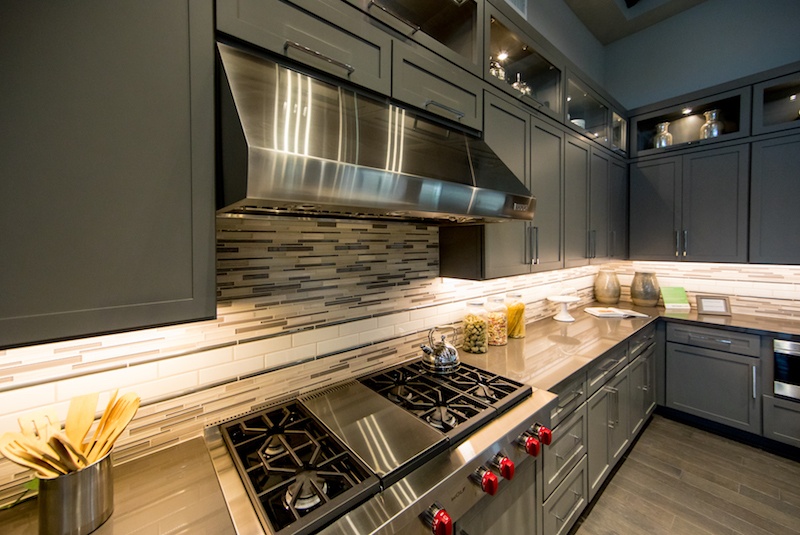There once was a time when the best way to light a kitchen was to have a large window. Incandescent ceiling fixtures in historic homes may have been wonderful in their time, and fluorescent dropped ceilings were once considered trendy, but who would want such things today?
Thankfully, lighting advances of the past few decades have brought innovative new options. Today, the “buzz” is all about under cabinet lights, used to shed light in the right places for specific tasks. No longer limited to fluorescent strips that emitted their own buzz, today’s kitchen task lighting involves a full spectrum of choice: fixture style and installation method, bulb and wattage, line or low-voltage, lighting tone and intensity, as well as cost. There are dimmable options and numerous ways to customize a kitchen lighting plan.
Few would disagree about the importance of planning a home’s lighting to create a warm and comfortable atmosphere, and assuring that the quality of light is right for each room’s use. Kitchen lighting is especially important, not only for general use, but for chopping and clean up, for serving food and enjoying family time, even for safety.
But there are right ways to do it — and some are not so cool! Kitchen lighting can and should be varied, economical and adjustable. Not all under cabinet lights are created equal.
5 Under Cabinet Lighting Considerations
1. Xenon Lights
Xenon offers high-quality light; it’s clean and white and the bulbs, while a type of incandescent, are long-lasting. The light is intense, but dimmable; often xenon fixtures have three-way switches. The biggest drawback is the heat they generate; they are also less than energy-efficient.
2. Halogen Fixtures
Also a high-quality, pure light, halogen bulbs also generate a substantial amount of heat. Bulbs have a relatively short lifespan, and they tend to get very hot and shed light that tends to be bright and spotty. However, halogen strips are available in different sizes, and newer models have diffusers that help even out the light.
3. LED Lighting
Since it was developed in the early 1980s, LED has been a sort o f“gold standard” for under cabinet lighting. But it’s not perfect. It too can create little circles of light, also there are modern ways to diffuse and soften the light. Although LED diodes are long-lasting and cooler than incandescent bulbs, the light they shed tends to be in the bluish range, or “cool,” similar to fluorescent lighting. Some homeowners dislike the tone.
4. Fluorescent Light Bars
These are the classic strips that transformed dark kitchen counters into efficient work spaces; they are functional and affordable, but often not terribly attractive, and the light is usually a bit stark and blue, although warm fluorescents are available. These strips are a common DIY solution in older homes where existing wiring does not accommodate other lighting options.
5. Specialty Lights Hockey pucks sometimes fall into the category of specialty lights. They may be installed singly or in sequence. They are frequently used for lighting cabinet interiors, bookcase shelves and display cabinets as well as for under cabinet lighting. The small round fixtures are available with LED, xenon or halogen bulbs, and some models are battery-operated “stick-ons” suitable for out-of-the-way places and infrequent use.
Other Under Counter Lighting Options
Flexible strip lighting is a relatively new option, often used to emit a soft-glow along cabinet toe-kicks; they can be used as soft accent light in other areas, but are not often installed as task lighting.
As new lighting technology is developed, you can expect under cabinet lighting that has better color, is more adaptable, and more energy-efficient. Sim-line strips and unique installations offer attractive and practical solutions for kitchen task needs.
Kitchen Lighting Experts
Aterra can help with all your kitchen lighting design questions, as well as create an overall home lighting and wiring plan to fit your needs and your budget. Just give us a call.



